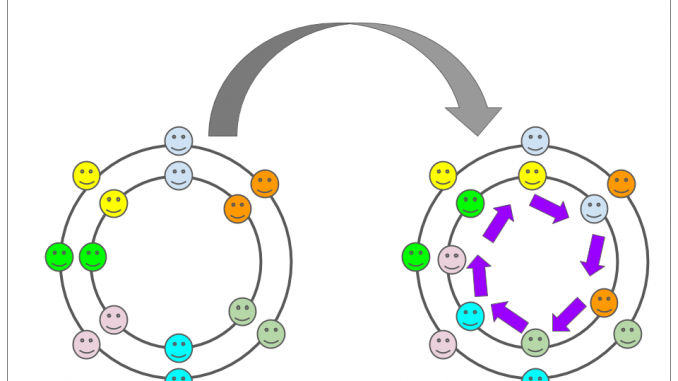
What is it?
A discussion prompt is given. Equal numbers of students in two concentric circles rotate every two minutes so they have the chance to meet and talk with everyone in the circle.
Why do it?
Concentric circles helps students to meet each other, and works well as an ice-breaker early in the module. It and also provides a reason for students to leave their seats, which may help to maintain energy levels.
How is it set up?
- Ask students to form two circles, one inside circle and one outside circle, facing each other with each student on the inside paired with a student on the outside..
- Pose a question to the whole group and ask pairs to discuss their responses with each other for roughly two minutes.
- After two minutes, ask students on the outside circle move one space to the right so they are standing in front of a new person.
- Now the lecturer poses a new question and the process is repeated until all students have met each other.
Considerations
With a group of 10 students, this process takes 10 minutes, so this may be useful in seminar groups. To make it feasible in larger cohorts, try several parallel concentric circles (if you have a adequate space).
Keeping the questions specific to the discipline will make the exercise feel relevant for students.
If you are using Concentric Circles for an ice breaker, ask questions about viewpoints rather than facts – for example “What made you decide to study […]”, or “If you could meet anyone from […], who would it be?”.
Variations
Instead of posing a new question with each rotation, students respond to the same question, incorporating each others’ responses.
Instead of two circles, students could also form two straight lines facing one another. Instead of “rotating” to switch partners, one line just slides over one spot, and the leftover person on the end comes around to the beginning of the line. Some lecturers use this strategy as an ice-breaker.
Examples and resources
Image source: IDiscoverITeach.

Leave a Reply